Ductless Condensate Pumps: What You Need To Know
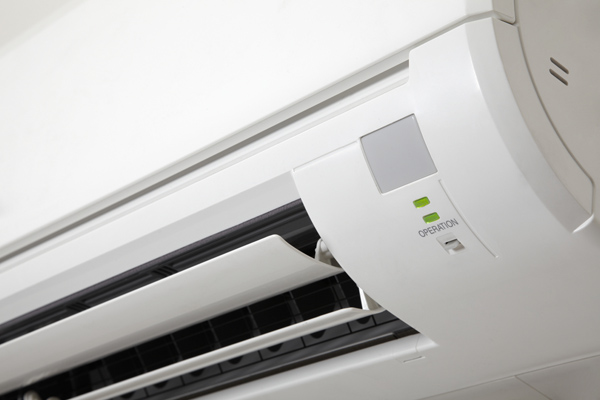
In the simplest terms, condensation is vapor converted into liquid. A simple example to understand this is the droplets of water that form on a cold can of soda when you’re outside in the summer. The humid air outside is cooled beyond its dew point, hence the droplets.
To remove humidity from inside your home, consider investing in a mini-split. It is a cooling solution and results in drier indoor air for extra cooling. It also helps to evaporate any moisture on your skin, which will help to cool down your body. In this article, we discuss what you need to know about the ductless condensate pump.
Is Condensate Dangerous?
Contents
- 1 Is Condensate Dangerous?
- 2 How Do Mini-Splits Remove Condensate?
- 3 What Are The Basic Components Of A Ductless Condensate Pump?
- 4 Types Of Condensate Pumps
- 5 Four Common Condensate Installation Mistakes
- 6 Do I Need Professional Ductless Installation?
- 7 Call R.F. Ohl To Learn More About Ductless Heating & Cooling Systems
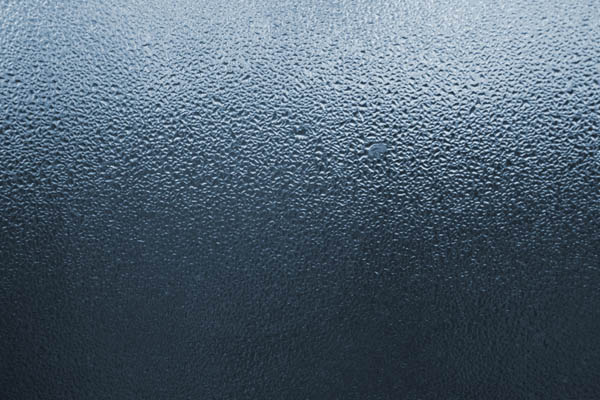
If it is not properly dealt with, condensation in your home can lead to lots of issues. Water droplets can pool up, and cause damage to your floors, ceiling, walls, and possibly other things. Condensation can result in mold growth. This is very harmful to your home as well as your health. It can cause respiratory illnesses or skin allergies.
It is necessary that condensation is drained properly from your home. If you don’t do this it can damage your property and even your family’s health. Condensation damages can cost up to a few thousand dollars.
How Do Mini-Splits Remove Condensate?
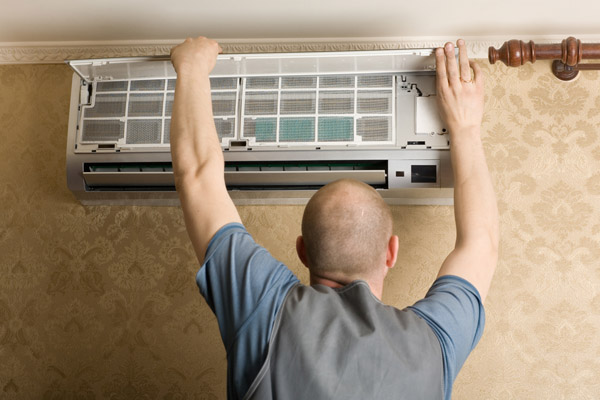
There are different ways mini-split systems remove condensate. Some systems need pumps while others utilize a gravity-drain tube. The list below goes through the common ways mini-splits work.
Pipe Runs
Typically, wall-mounted and floor units do not have condensate pumps. Alternatively, these types of units use gravity to drain the water. This requires the drain line to be tilted downwards.
To make sure the moisture is removed properly, run the drain line through a hole that is one-fourth to one-half inches higher than it is outside. This will ensure the line is angled down.
Drain Tubes
The most common way wall and floor-mounted units remove condensation is with a drain tube that has a 5/8″ inner diameter vinyl tubing.
Make sure the tube does not get kinked. If it does, the water will not drain properly. There’s a chance condensate could damage the indoor air handler if it overflows. To avoid this problem, use a braided tube that has less of a chance of becoming kinked.
Pumps
In some instances, gravity drainage is not possible. Instead, a condensate pump needs to be used. They are made up of a 1” or 1 to 1/4″ PVC rather than the usual tubing. Because of this the pump can keep a slope throughout the horizontal run.
To make things simpler, you can connect multiple indoor air handlers to one drain line. Before you do this, talk to a professional technician and look at the manufacturer’s guidelines. You’ll need to ensure that the single line can handle all the water from each indoor unit.
Ceiling suspended, ceiling cassette and concealed ducted units often have built-in lift pumps. On the other hand, floor and wall-mounted units are typically mounted on a wall so they can drain any condensate without needing a pump. A ground-level unit needs a condensate pump to drain water.
What Are The Basic Components Of A Ductless Condensate Pump?
Condensate pumps usually consist of two important parts, the float switch and the reservoir. The indoor unit’s drain pan is connected to the reservoir. The collected water goes there while the mini-split unit is cooling.
The built-in float switch turns on the condensate pump once the condensate gets to a certain level. If the condensate pump is not operating properly, the float acts as a warning bell. The switch keeps the condensate from overflowing by turning off the indoor air handler.
Types Of Condensate Pumps
All condensate pumps were created to remove condensate, but there are some different types to pick from. You should learn about each option and its benefits to determine which condensate pump is best for you.
The different options of condensate pumps are:
Standard
The standard style of a condensate pump is compact and discreet. Its reservoir is located inside the indoor air handler. This hides it behind a ceiling or wall so it’s out of sight. It will work well with all other applications since it has a standard plug.
Low Profile
If you want a small condensate pump, a low profile one will be your best choice. It’s less intrusive than the standard one and will be hidden completely away. It’s a very slim and inconspicuous pump.
Surface Mounted
Surface-mounted condensate pumps are installed right under your mini-split system. The pump and reservoir are located in a small box outside of the unit. Because of its accessible location, surface mounted pumps are easy to clean and repair. If you need easy access to the reservoir, then a surface mounted condensate pump is a great choice.
High Suction
The only difference between a high suction condensate pump and a standard one is that the high suction one has extra suction power which allows it to lift condensate further and higher. This pump is ideal if your indoor unit is below ground level. In this setup, water needs to be moved higher before it can drain outside. There will also be less noise because these pumps are installed away from your living space.
Four Common Condensate Installation Mistakes
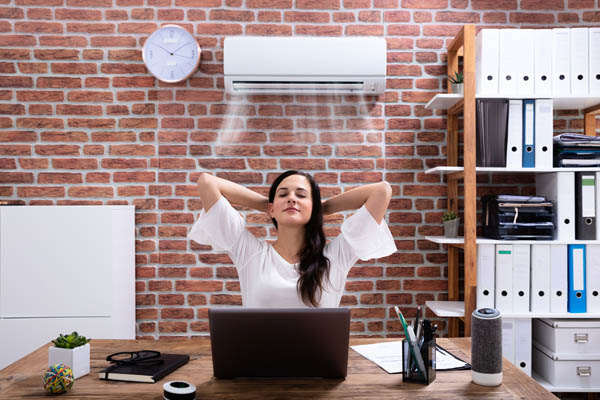
Installing mini-split condensate pumps can be a bit challenging. If you don’t have the proper tools, experience, and knowledge, you can harm the equipment’s functionality. Some common errors include:
Pump Omission
Some mini-split systems do not have a condensate pan since the water is drained by gravity. But in some situations, gravity draining is not possible and a condensate pump is necessary so there is no overflow.
Siphoning
Siphons are commonly routed incorrectly which causes an airlock and overflow or damage to the pump. It may not drain correctly and the condensate can overflow.
Some condensate pumps come with anti-siphoning devices for free. Anti-siphoning devices are made of plastic that is two-inches long and prevents the pump from auto-siphoning. It is able to be installed either vertically or horizontally.
Pump Selection
The easiest mistake to make is picking the wrong pump. The wrong pump can cause issues like loud noise, poor performance, and the ease of installation.
For example, choosing a large wall-mounted pump is likely not necessary for a mini-split unit. They are also very noisy and not aesthetically pleasing.
Wiring
Condensate pumps use line-voltage power that is connected to the unit’s electrical terminal. There are different pump wiring requirements for each mini-split unit. Not one diagram can show all of the mini-split makes and models. So wiring incorrectly is a common error.
Do I Need Professional Ductless Installation?
If you have any questions or concerns about which condensate pump is right for you and your home, contact a professional. They will be happy to explain your options and properly install your system.
Professional installation will guarantee you get the most out of your mini-split, and it will make sure all parts of it, like the condensate pump, will work correctly for a long time. In addition, professional installation ensures that the factory warranty will remain intact.
Check Out One Of Our Ductless Installation Projects
Ductless Panels Add Heat And AC In An Addition To A Catasauqua PA Home
Call R.F. Ohl To Learn More About Ductless Heating & Cooling Systems
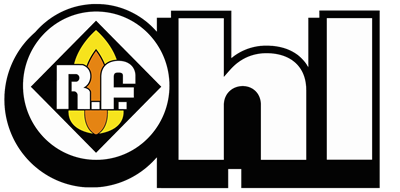
If you want to discover what a ductless HVAC system can do for you, call R.F. Ohl. Our NATE-certified technicians will help you determine the type of HVAC system that works best for your needs.
R.F. Ohl is one of the region’s leading full-service HVAC companies. We offer a wide range of HVAC services, from installations and tune-ups to repairs and consultations. We can help you find different approaches and solutions to ensure that our services meet your requirements and budget. Call us today for a free, in-home estimate.
Click here to contact us today or give us a call at (610) 377-1098 if you have any questions.